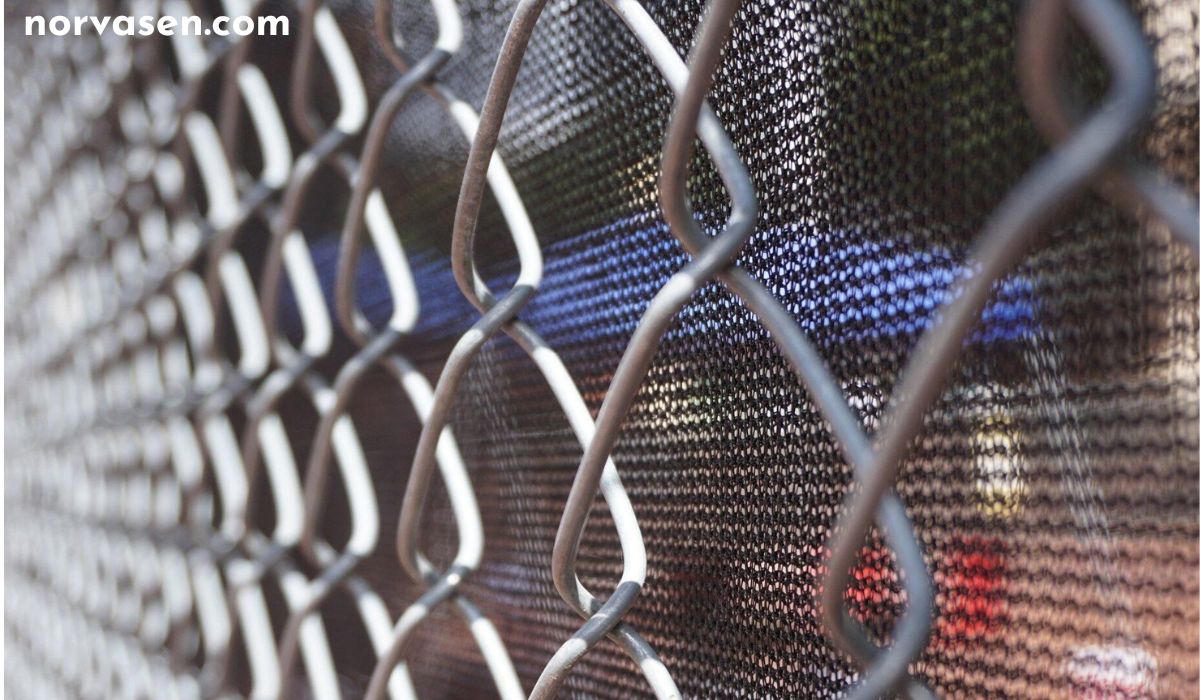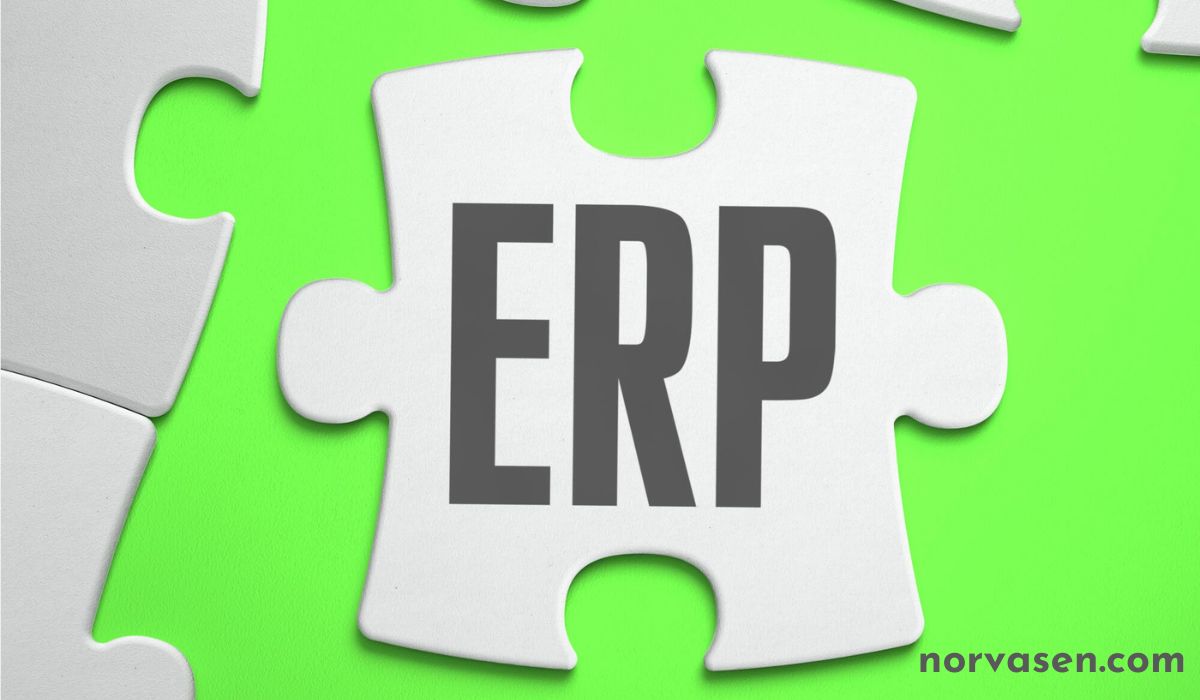Business
Innovations in Well Drilling Techniques and Equipment

The oil and gas industry’s dedication to innovation has unmistakably propelled the evolution of well drilling processes into a new era. The purpose of innovation in drilling techniques is multifaceted, encompassing advances that aim to enhance operational safety, increase efficiency, and minimise the environmental impact. As global energy demand grows and extraction becomes increasingly challenging, these innovations play a critical role in ensuring the viability and sustainability of hydrocarbon resource development.
Understanding the evolution of well drilling is essential to appreciate the modern advancements in this field. The journey from simple cable tool drilling methods to today’s sophisticated rotary drills is a testament to human ingenuity and the relentless quest for improvement. Initially, the industry’s main goal was to drill wells as quickly and as deeply as possible. Now, the objectives have become more nuanced, steering towards precision, control, and minimal ecological disruption.
Advanced drilling equipment is a cornerstone of modern well drilling achievements. Automated drilling rigs represent a turning point in drilling operations, introducing remarkable levels of consistency and safety. These rigs can autonomously adjust drilling parameters, reduce human error, and continuously operate, thus improving the overall efficiency of drilling projects. An important aspect of these operations is well decommissioning, which ensures the safe and environmentally friendly closure of wells after their productive life ends. This process is integral to the lifecycle of a well and is a critical consideration in modern drilling operations.
High-precision downhole tools have radically revamped the industry’s ability to drill with accuracy. These tools include Measurement-While-Drilling (MWD) and Logging-While-Drilling (LWD) instruments, which provide real-time data on the geological formations being drilled. Alongside steering capabilities that allow for directional drilling, these tools have profoundly impacted the industry’s approach to exploring and exploiting oil and gas reservoirs.
Enhanced surface equipment complements the advanced technologies used downhole. Innovations in blowout preventers, mud pumps, and drilling fluid recycling systems are just a few examples of the advancements helping to reduce the risk of accidents and environmental contamination. Superior control systems allow for immediate adjustments to drilling operations, bolstered by precise detection equipment that monitors for potential issues like gas kicks or equipment malfunctions.
Directional and horizontal drilling underscore the significance of technological advancements in the realm of well architecture. Directional drilling gives operators the ability to precisely target oil and gas reservoirs, reducing the number of drill sites required and thereby lessening the environmental footprint. This technique also allows wells to be drilled with strategic trajectories, avoiding subsurface hazards and optimizing hydrocarbon production.
The technology behind horizontal drilling is a culmination of advanced computational modeling, accurate geosteering, and specialized drilling tools. Horizontal wells can traverse expansive distances laterally, exposing more reservoir rock to the wellbore. This increased contact area significantly improves the well’s productivity compared to traditional vertical wells.
The applications and advantages of horizontal drilling are extensive and profound. It enables the development of resources that were previously uneconomical or technically challenging to extract, such as tight shale formations and thin oil zones. Beyond enhancing oil and gas recovery rates, directional and horizontal drilling also facilitate the installation of underground utilities with minimal above-ground disruption, showcasing their versatility beyond the energy sector.
Real-time monitoring and control systems are pivotal in the ongoing transformation of well drilling practices. Downhole measurement tools equipped with sensors continuously transmit vital data to the surface, giving operators a detailed understanding of the well environment in real time. This immediate flow of information allows for dynamic decision-making, optimising drilling parameters for the best possible performance.
Surface data analytics, powered by advanced software platforms, process the wealth of information gathered by downhole measurement tools. Sophisticated algorithms analyse drilling dynamics, fluid properties, and formation characteristics to forecast potential problems and provide recommendations for operational adjustments. These insights enable drilling crews to make informed decisions swiftly, leading to safer and more productive operations.
The impact of these monitoring and control systems on drilling efficiency cannot be overstated. With real-time access to critical data, operators can reduce non-productive time, minimise the likelihood of costly mistakes, and ensure the integrity of the wellbore. This level of control and oversight substantially lowers the risk of blowouts and other catastrophic events, thus protecting both the workers and the environment.
Environmentally friendly drilling practices have increasingly become a priority within the oil and gas industry, prompted by public concern and regulatory demands. Reduced footprint drilling techniques aim to streamline the drilling process to minimise land use and ecological disruption. This can mean developing multi-well pads where several wells are drilled from a single location or employing extended-reach drilling to access remote reserves without additional surface disturbance.
Biodegradable drilling fluids represent another important stride towards eco-conscious drilling operations. These fluids are designed to break down more quickly in the environment, reducing the risk and severity of spills or leaks. Their formulation can also be adjusted to minimise impact on marine life and other ecosystems when drilling occurs offshore or in sensitive areas.
Waste management systems in well drilling operations have undergone significant changes to ensure environmentally sound disposal of drill cuttings, used fluids, and other waste products. Techniques such as cuttings re-injection, where waste material is pumped back into subsurface formations, and solidification, which involves mixing drill cuttings with binders for safer disposal, have played a part in reducing the environmental footprint of drilling activities.
Continuing the trend of innovations tailored to tackle some of the industry’s most demanding challenges, high-pressure, high-temperature (HPHT) drilling innovations address the complexities associated with exploring extreme environments. Advanced materials for equipment such as new alloys and composites are being used to manufacture drill bits, pipes, and other components that can withstand the intense conditions encountered in HPHT wells.
Thermal management systems are also critical in ensuring the reliability and safety of drilling operations under these severe conditions. These systems include cooling mechanisms for downhole tools and insulation technologies that protect sensitive electronics from temperature extremes. Effective thermal management not only extends the lifespan of drilling equipment but also helps maintain the integrity of the wellbore.
Safety protocols for extreme conditions have become more rigorous and technologically advanced, ensuring the well-being of personnel and protecting the environment. Enhanced monitoring systems detect irregularities that could indicate equipment failure or the risk of a blowout, triggering automated safety responses. Training and emergency prepared procedures are also integral to the industry’s approach to operating safely in HPHT conditions.
Enhanced oil recovery (EOR) techniques continue to evolve as the industry seeks ways to extract the maximum value from existing reservoirs. Hydraulic fracturing developments, including the use of more precise fracturing techniques and environmentally safer fluids, have unlocked vast quantities of hydrocarbon resources, particularly in shale formations.
Chemical EOR methods have also seen significant advancements with the introduction of more efficient and less toxic chemicals to improve oil recovery. Polymers, surfactants, and alkaline agents are designed to reduce the oil-water interfacial tension and increase oil mobility, enabling increased oil production from mature or declining fields.
In addition to chemical methods, thermal and gas injection technologies are enhancing oil recovery by altering the reservoir conditions to make oil flow more readily. Thermal methods, such as steam injection, heat the oil to reduce its viscosity, while gas injection involves introducing gases like carbon dioxide or nitrogen into the reservoir to pressurize and displace the oil towards production wells.
The strategies of underbalanced and managed pressure drilling (UBD and MPD) represent a shift toward more controlled and optimized drilling operations. Underbalanced drilling involves maintaining the wellbore pressure below the pressure of the formation being drilled, which can result in faster drilling rates and reduced damage to the productive zone of the reservoir.
Managed pressure drilling techniques refine the ability to precisely control the pressure profile within the wellbore. By continuously adjusting the mud weight and circulating pressures, MPD systems can maintain an optimal balance, preventing common drilling problems like kicks and lost circulation. These strategies have also proved valuable in reducing the risk of differential sticking and wellbore instability.
The benefits of UBD and MPD extend to risk mitigation and increased production. By enabling safer drilling in challenging environments and improving the overall quality of the wellbore, these practices can reduce the likelihood of operational hazards while maximizing hydrocarbon extraction from the drilled wells.
The incorporation of artificial intelligence (AI) and machine learning (ML) in well drilling operations is rapidly changing the landscape of the oil and gas industry. Predictive maintenance leverages AI to analyze data from drilling equipment, providing early warnings of potential failures and recommending proactive maintenance actions to avoid downtime.
Drilling optimization algorithms powered by machine learning analyze historical and real-time data to optimize drilling parameters such as weight on bit, rotational speed, and mud flow rate. These algorithms can continuously adapt drilling strategies to changing conditions, optimizing performance and minimizing wear on equipment.
Autonomous drilling operations stand at the cutting edge of AI and ML innovations. In these scenarios, entire drilling systems operate with limited human intervention, using algorithms to make real-time decisions and execute complex drilling operations. While fully autonomous drilling is still in its infancy, ongoing research suggests it could redefine the role of human workers in drilling operations, moving towards supervisory and decision-making roles rather than manual operation.
Looking ahead, future trends and challenges in well drilling are poised to test the industry’s adaptability and commitment to continuous improvement. The potential for renewable energy integration into drilling operations, such as using solar or wind power to supplement conventional energy sources, represents both a promising frontier and a complexity in logistics and systems integration.
Challenges in deepwater and unconventional reservoirs continue to push the boundaries of technology and engineering. Drilling in these environments requires highly specialized equipment and techniques to cope with extreme pressures, temperatures, and unpredictable geology. The industry’s ability to innovate will be crucial in surmounting these obstacles and unlocking new reserves.
Lastly, addressing regulatory and safety concerns remains a persistent priority. As drilling technologies advance, so do the regulatory frameworks designed to protect workers, communities, and the environment. Compliance with these changing regulations, while also maintaining economic viability, requires a delicate balance that can only be achieved through innovation in well drilling techniques and equipment.
In conclusion, the field of well drilling rig is undergoing a transformative period thanks to a wide array of technological advancements. From automated rigs and precision downhole tools to environmentally conscious practices and the potential of AI, the future of drilling beckons with the promise of greater efficiency, safety, and respect for the planet. As the industry navigates the challenges ahead, the importance of continuous innovation and adaptation cannot be overstated. With each new advance, well drilling becomes not only a story of extracting resources but also one of ingenuity and conscientious stewardship.
YOU MAY ALSO LIKE
Business
Trusted Commercial Fence Contractors for Your Property Needs

Securing your property means investing in quality fencing solutions. This is especially true in today’s competitive market.
Working with trusted commercial fence contractors is essential. This is whether you’re a business owner looking to enhance security or a property manager seeking aesthetic improvements.
This blog post will guide you through the process of finding reliable contractors. We’ll help you make the most informed choice for your property needs.
So, read on to learn more!
Do Your Research
Before choosing a commercial fence contractor, it’s crucial to do your research. This means looking into their experience, expertise, and past projects.
One way to start is by checking the company’s website. Here, you can find information on their services, client testimonials, and photos of previous work.
You can also check online review websites such as Yelp or Google My Business for ratings and reviews from other customers. This will provide insight into the contractor’s reputation and level of customer satisfaction.
Ask for Referrals
Word-of-mouth recommendations are another valuable resource when searching for reliable commercial fence contractors. Ask colleagues or business partners if they have worked with any reputable contractors in the past.
You can also reach out to other property owners or managers in your area for recommendations. This will not only help you find trusted contractors. It will also give you insight into pricing and project timelines.
Consider Credentials
When choosing a commercial fence contractor, it’s essential to consider their credentials. Make sure they are licensed, insured, and have all the necessary permits required for fencing projects in your area.
A reputable contractor should also be willing to provide references from previous clients and proof of completed projects similar to yours. This will give you peace of mind knowing that you’re working with qualified professionals. Whether you are up for roll-up garage doors or simply revamping your property’s fence, proper credentials are essential.
Get Multiple Quotes
It’s always a good idea to get multiple quotes from different commercial fence contractors before making a decision. This will not only give you an idea of the market price. It will also help you compare services and project timelines.
Be wary of extremely low quotes; they may be a red flag for subpar materials or workmanship. Remember, quality fencing solutions require proper investment. Whether you are going for clear garage doors or security fencing, always prioritize quality and reliability.
Communication is Key
When working with commercial fence contractors, communication is key. Make sure to communicate your expectations and ask any questions you may have regarding the project.
A reputable contractor should be transparent about their:
- process
- costs
- any potential delays or issues
This will ensure that both parties are on the same page throughout the entire process.
Hire the Right Commercial Fence Contractors
Securing your property with quality fencing solutions is essential to protect your business and enhance its appearance. Working with trusted commercial fence contractors is a crucial step in this process.
Investing in the right commercial fence contractor can provide long-term benefits for your property. So take the time to find the best fit for your needs and watch as your property’s security and aesthetics improve.
Should you wish to explore more reads, head to our blog page. We’ve got more!
Business
Streamlining Your Business with ERP Software to Optimize Efficiency

Streamlining your business can help you work better and faster. ERP software is a useful tool that helps companies manage their daily tasks in one place. By using this software, you can save time and reduce mistakes, making your business more efficient.
ERP stands for Enterprise Resource Planning, and it is a type of software that integrates multiple business processes into one system.
In this blog, we will explore how to streamline your business with ERP software to optimize efficiency.
Centralized Data Management
Centralized data management is key to running a successful business. By keeping all data in one place, employees can easily access information. This leads to faster decisions and fewer mistakes.
When companies use centralized systems, they can track everything better. This helps in sharing data across teams. As a result, optimized business operations become possible, boosting overall productivity and efficiency.
Automate Routine Tasks
Automating routine tasks is essential for saving time and reducing errors. With ERP software, businesses can set up processes to run automatically, like billing and reporting. This means employees have more time for important work that needs creativity.
Automated tasks help businesses run smoothly. When repetitive jobs are done by the software, mistakes go down. This leads to better efficiency and is a key part of ERP optimization that every company should consider.
Improve Inventory Management
Good inventory management is very important for any business. ERP software helps track inventory levels in real-time. This means you always know what you have in stock.
With better inventory management, you can avoid overstocking items. You can also make sure you do not run out of popular products. This leads to streamlined business processes and happier customers, as they can get what they need without delay.
Enhance Financial Reporting
An ERP system feature allows businesses to improve their financial reporting. It helps collect all financial data in one place. This means reports are more accurate and faster to create.
Better financial reporting helps businesses understand their money. Companies can see their profits and expenses clearly. This helps them make smart choices about spending and saving.
Foster Better Collaboration
Fostering better collaboration is key to a successful business. ERP software makes it easy for teams to share information. This helps everyone stay on the same page and work together smoothly.
With strong teamwork, projects get done faster. Using NetSuite optimization services can help improve communication. Better collaboration leads to satisfied employees and customers.
Streamline Supply Chain Operations
Streamlining supply chain operations is important for every business. ERP software helps manage all parts of the supply chain in one system. This means you can track orders, shipments, and suppliers easily.
When the supply chain runs well, businesses save time and money. With clear information, companies can spot problems early. Happy customers get their products on time, which helps grow the business.
Wrapping Up: Key Steps to Optimize Efficiency
Using ERP software is a smart choice. It helps businesses manage tasks better and find new ways to optimize efficiency. By focusing on centralization, automation, and better collaboration, you can enhance your operations.
Effective inventory management and financial reporting lead to clearer insights. These insights help in making good business decisions. When teams work together, everyone benefits.
By streamlining supply chain operations, you can improve service for your customers.
Did this article help you? If so, take a look at some of our other blog posts for more informative reads.
Business
Best Poshmark Sharing Bot vs. Manual Sharing

Introduction
Sharing items on Poshmark is a vital activity for sellers to increase the visibility of their listings and drive sales. Sellers have two main options: using a Poshmark sharing bot or manually sharing their listings. In this post, we’ll compare these two methods to help you decide which is best for your Poshmark business.
What is a Poshmark Sharing Bot?
A Poshmark sharing bot is a software application designed to automate the process of sharing items in your Poshmark closet. These bots can perform a variety of tasks, such as sharing your listings, following other users, and sharing items to Poshmark parties. They work by simulating the actions you would normally perform manually, thus saving you time and effort.
Manual Sharing on Poshmark
Manual sharing involves personally handling all the tasks required to maintain an active Poshmark presence. This includes sharing your items multiple times a day, following new users, and participating in Poshmark parties. While manual sharing gives you full control over the process, it can be incredibly time-consuming and tiring.
Pros and Cons of Using a Sharing Bot
Advantages:
- Time-Saving: Sharing bots handle repetitive tasks, freeing up your time for other important activities.
- Consistent Activity: Bots can share your items at regular intervals, ensuring your closet remains active and visible.
- Increased Engagement: By automating interactions, sharing bots can help you gain more followers and potential buyers.
Potential Drawbacks:
- Cost: While many sharing bots offer free trials, premium features often come with a subscription fee.
- Risk of Account Suspension: Poshmark’s terms of service discourage automation. Using bots can potentially lead to account suspension if detected.
Pros and Cons of Manual Sharing
Advantages:
- Full Control: Manual sharing allows you to personally manage all interactions, ensuring a personalized touch.
- Compliance: There is no risk of violating Poshmark’s terms of service, as you are performing all tasks manually.
Potential Drawbacks:
- Time-Consuming: Sharing items manually multiple times a day can be very time-consuming.
- Physical Strain: The repetitive nature of manual sharing can lead to physical strain, especially if you have a large closet.
Conclusion
Both sharing bots and manual sharing have their advantages and disadvantages. If you’re looking to save time and maintain a consistent presence on Poshmark, a sharing bot might be the right choice for you. However, if you prefer full control and want to avoid any potential risks, manual sharing is a safer option. Ultimately, the best choice depends on your individual needs and preferences.
For more information on automating your Poshmark closet and boosting your sales, explore the features offered by this Poshmark automation tool.
-

 Tech5 months ago
Tech5 months agoExploring the Features of Innocams: The Future of Security
-

 Home Improvement3 months ago
Home Improvement3 months agoEco-Friendly Round Rug Options for Sustainable Living in NZ
-

 How-To Guides2 months ago
How-To Guides2 months agoComprehensive Guide to Cockwarming: Enhancing Intimacy and Connection
-

 Fashion3 months ago
Fashion3 months agoBlack Magic: The Elegance and Sophistication of Ultimate Homecoming Dresses in Black
-

 Apps and Games3 months ago
Apps and Games3 months agoDiscover Tickzoo: The Ultimate Platform for Video Content Lovers and Creators
-

 Business5 months ago
Business5 months agoUnlock Potential: Explore Pikruos Services
-

 Blog3 weeks ago
Blog3 weeks agoPossiblyethereal: Exploring the Ethereal Unveiling Abstract Ideas
-

 Entertainment4 months ago
Entertainment4 months agoDiving into the Audio-Visual Experience with AV Tub: Innovating Our World of Media
















